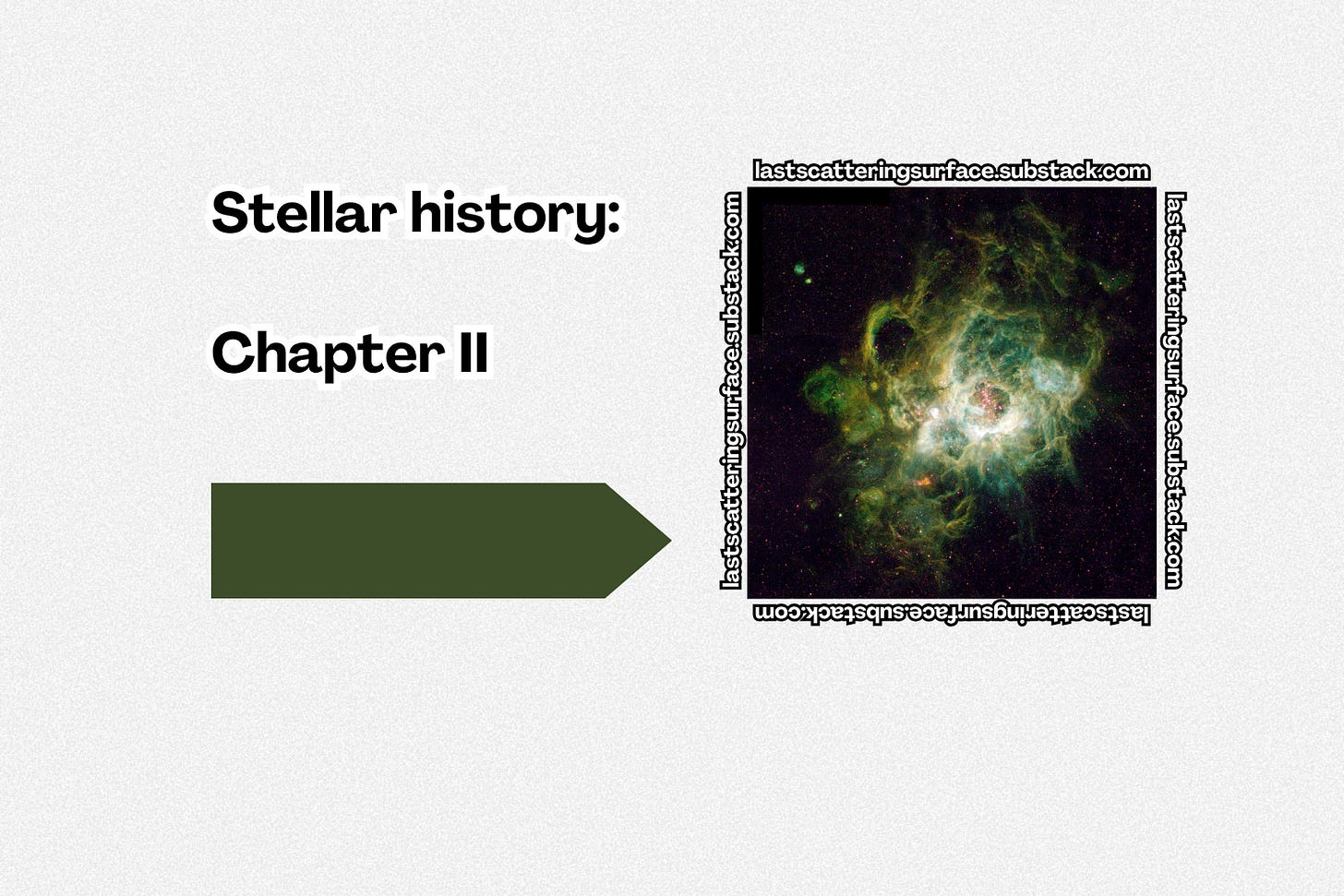A story of a star - Part II
We are following the protostar's journey to become a "true" star: it is a tale of collapse, fragmentation, rising densities and constant temperature.
In the last episode, we departed from our star when it was undergoing a balanced duel between gravitational collapse and pressure gradients.
When this battle is won by gravity, the star will collapse (in the absence of rotation, magnetic fields, and other secondary effects that can favor one or the other).
At this point, we can consider for the sake of simplicity that the pressure gradients (that is, the velocity with which quantities change, pressure in the specific case) become small. If such a scenario occurs, pressure can not influence the protostar's formation and we can consider the cloud in free-fall1.
During this free-fall, the temperature of the gas remains almost constant, and the collapse is called isothermal. This happens even though the cloud is shrinking because the cloud is said to be “optically thin”, that is, the photons emitted can travel a lot before encountering a particle and interacting with it. In this fashion, the gravitational potential of the collapse is radiated away.
Then, assuming that the sphere of cloud that soon will become our star is spherically symmetric (this is a good assumption), the next thing to do is to solve a differential equation of the second order. This is a relatively simple thing to do, and indeed it is done with a few substitutions and some mathematical manipulation, resulting in a relation for the free-fall time that is, viz.:
where G is the gravitational constant and the other term is the initial density.
One interesting feature of this relation is that the free-fall timescale is independent of the initial radius of the cloud. This means that every time the initial density is a good indication of the density throughout the entire cloud, i.e. the cloud has a uniform initial density, then every patch of the cloud will take the same time to collapse.
Congratulations, you (hopefully) grasped the concept of homologous collapse.
Nonetheless, when the cloud has an overdense region in the center, the free-fall time for the material inside the cloud will be inevitably shorter than for the outer parts. This is then called inside-out collapse.
But when does the collapse happen? Is there a minimum mass the cloud has to achieve to shrink and become a star? The answer is yes, and lies again in the work of Sir James Jeans (our old friend from this episode). The minimum mass necessary to initiate the collapse is called Jeans mass, viz.:
where the quantities are the temperature, the molecular weight, the hydrogen mass, and again the initial density.
Large molecular clouds can easily exceed this limit: does this mean that stars have the same mass as these clouds? This is not the case, simply because we do not observe such a huge number of very massive stars (with 1500 solar masses). What does happen, you could ask?
What happens is a process called fragmentation, which is due to the inhomogeneities in the initial density: these subdense and overdense regions act like single clouds, each with a single Jeans mass and a different free-fall timescale.
Ok, suppose that this does happen; what stops this time the cloud from going under extreme fragmentation?
The answer lies naturally in the temperature!
We considered this quantity constant throughout the collapse, but this is not the case in the clouds we observe. In particular, at the other extreme of the isothermal collapse resides the adiabatic collapse, the one in which energy cannot be radiated away and remains in the infalling cloud, thus making the temperature rise.
When this happens, the Jeans mass goes like this:
this means that for adiabatic collapse, when the cloud shrinks, and the density goes up, the same thing happens for the Jeans mass needed to collapse!2
This results in a minimum Jeans mass when adiabatic effects become important (this scenario happens at some point when the cloud shrinks, as we said):
for a temperature of 1000 K, this means a Jeans mass of one-half of a solar mass.
This brief description has discarded many complications and features that are taken care of, like the velocity of the cloud, which we considered static at each point in our description.3
Taking care of (almost) everything, the limit of fragmentation, i.e. the minimum mass for a newborn star is 0.01 solar masses.
What lies ahead?
Equipped with our results and armed with the knowledge that simplificative assumptions ought to be made to continue, we will follow the life of a cloud of one solar mass, starting with the nearly isothermal collapse.
It will be fun, see you next time!
See you soon!4 (and if you liked subscribe!)
free-fall is the condition that is experienced by a body that feels solely the force of gravity.
the relation above is correct for atomic hydrogen (which is most of the cloud). In general, the relation goes like this:
it was requested by the Jeans criterion, take it out on him.
this time won’t pass a year, I promise.



